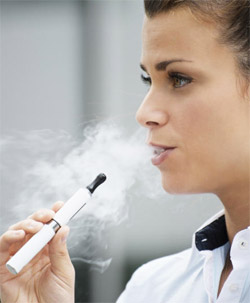fitness news
![]() ,
,![]()
Font size Women’s Health
Mathematics to improve running
– Reported, May 20 2014

We can runners improve their performance, weight and fitness? Amandine Aftalion from the Mathematics Laboratory in Versailles (CNRS/University of Versailles-Saint-Quentin-en-Yvelines) and Frédéric Bonnans from the Center of Applied Mathematics (CNRS/Inria/École polytechnique) have produced a mathematical model to optimize running, which could lead to personal e-coaching customized to each individual’s physiological state. It also confirms a well-known fact in the sports community: runners who vary their speed spend their energy better and thus run longer. Mathematics gives them the opportunity to switch from simple statistical tools to personalized sporting advice. This work, available on HAL, will be presented in Toulouse on May 16th, 2014, at the Futurapolis international meeting in which CNRS is a partner. It will also be published in the journal SIAM J.Applied Mathematics.
This mathematical model provides a system of differential equations connecting speed, acceleration, propulsion forces and friction, as well as runners’ energy, including maximal oxygen uptake (VO2max) 3 and anaerobic energy4. This system is coupled with initial conditions (zero speed and fixed amount of energy), and constraints: energy and propulsion force must be positive (runners cannot go back). Using this model, researchers are able to predict the optimal running strategy throughout the race, including the optimal speed and energy spent from the start. Their main result shows that by varying their speed, runners spend less energy and thus run longer. Moreover, by comparing these results with those of professional athletes, the authors can also specify which physiological parameters runners must improve by answering the following questions for example: what results would a champion achieve with the weight and maximal oxygen consumption of an amateur runner? Which parameters can amateur athletes improve to get closer to the results of a champion? Should it be their maximal oxygen uptake or anaerobic energy?
The applications of this model target two categories of individuals. In the case of “semi-professionals” runners who do not have the opportunity to work with a coach or for physical training purposes in schools, researchers hope to develop a software that could act as a personal e-coach by indicating which physiological parameters need improving and by implementing racing strategies based on instantaneous velocity. On the other hand, the system of equations, which can be adapted to all variables of interest to athletes (and not just speed), could enable occasional runners to find out the exact number of calories lost during a race (and not a simple average as with today’s available tools) in order to improve weight loss. The researchers are now taking into account new parameters such as altitude or wind effect to improve their mathematical model, so that it can be applied to other sports such as cycling, swimming or canoeing.
The report abstract can be accessed at: http://hal.inria.fr/hal-00851182
Story Source:
The above story is based on materials provided by CNRS (Délégation Paris Michel-Ange). Note: Materials may be edited for content and length.